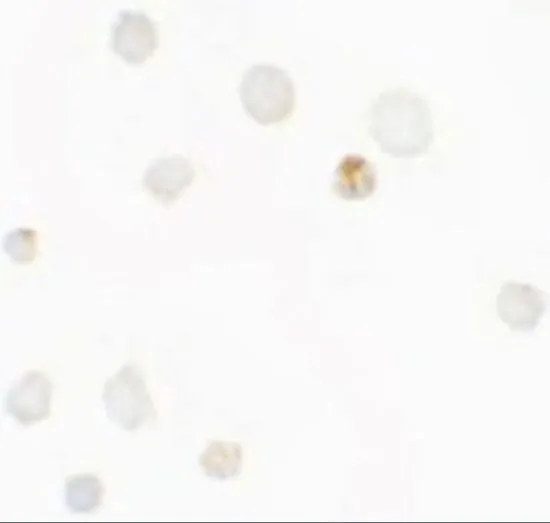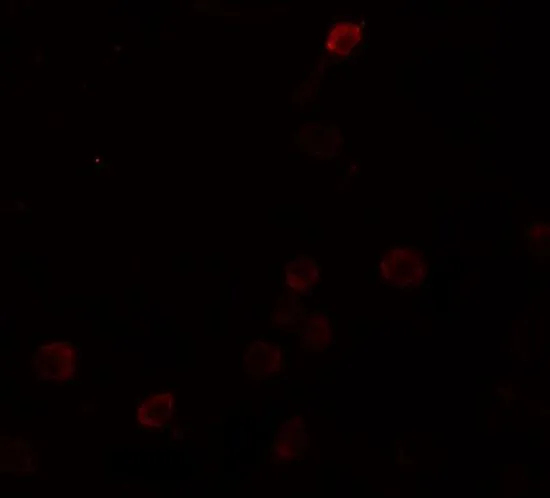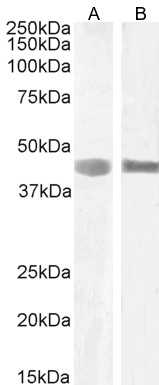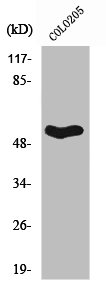
ICC/IF analysis of Raji cells using GTX31484 SEPT1 antibody. Working concentration : 5 microg/ml
SEPT1 antibody
GTX31484
ApplicationsImmunoFluorescence, Western Blot, ELISA, ImmunoCytoChemistry
Product group Antibodies
TargetSEPTIN1
Overview
- SupplierGeneTex
- Product NameSEPT1 antibody
- Delivery Days Customer9
- Application Supplier NoteWB: 1 microg/mL. ICC/IF: 5 microg/mL. *Optimal dilutions/concentrations should be determined by the researcher.Not tested in other applications.
- ApplicationsImmunoFluorescence, Western Blot, ELISA, ImmunoCytoChemistry
- CertificationResearch Use Only
- ClonalityPolyclonal
- Concentration1 mg/ml
- ConjugateUnconjugated
- Gene ID1731
- Target nameSEPTIN1
- Target descriptionseptin 1
- Target synonymsDIFF6; differentiation 6 (deoxyguanosine triphosphate triphosphohydrolase); LARP; peanut-like protein 3; PNUTL3; SEP1; SEPT1; septin-1; serologically defined breast cancer antigen NY-BR-24
- HostRabbit
- IsotypeIgG
- Protein IDQ8WYJ6
- Protein NameSeptin-1
- Scientific DescriptionThis gene is a member of the septin family of GTPases. Members of this family are required for cytokinesis and the maintenance of cellular morphology. This gene encodes a protein that can form homo- and heterooligomeric filaments, and may contribute to the formation of neurofibrillary tangles in Alzheimers disease. Alternatively spliced transcript variants have been found but the full-length nature of these variants has not been determined. [provided by RefSeq, Dec 2012]
- Storage Instruction-20°C or -80°C,2°C to 8°C
- UNSPSC12352203











